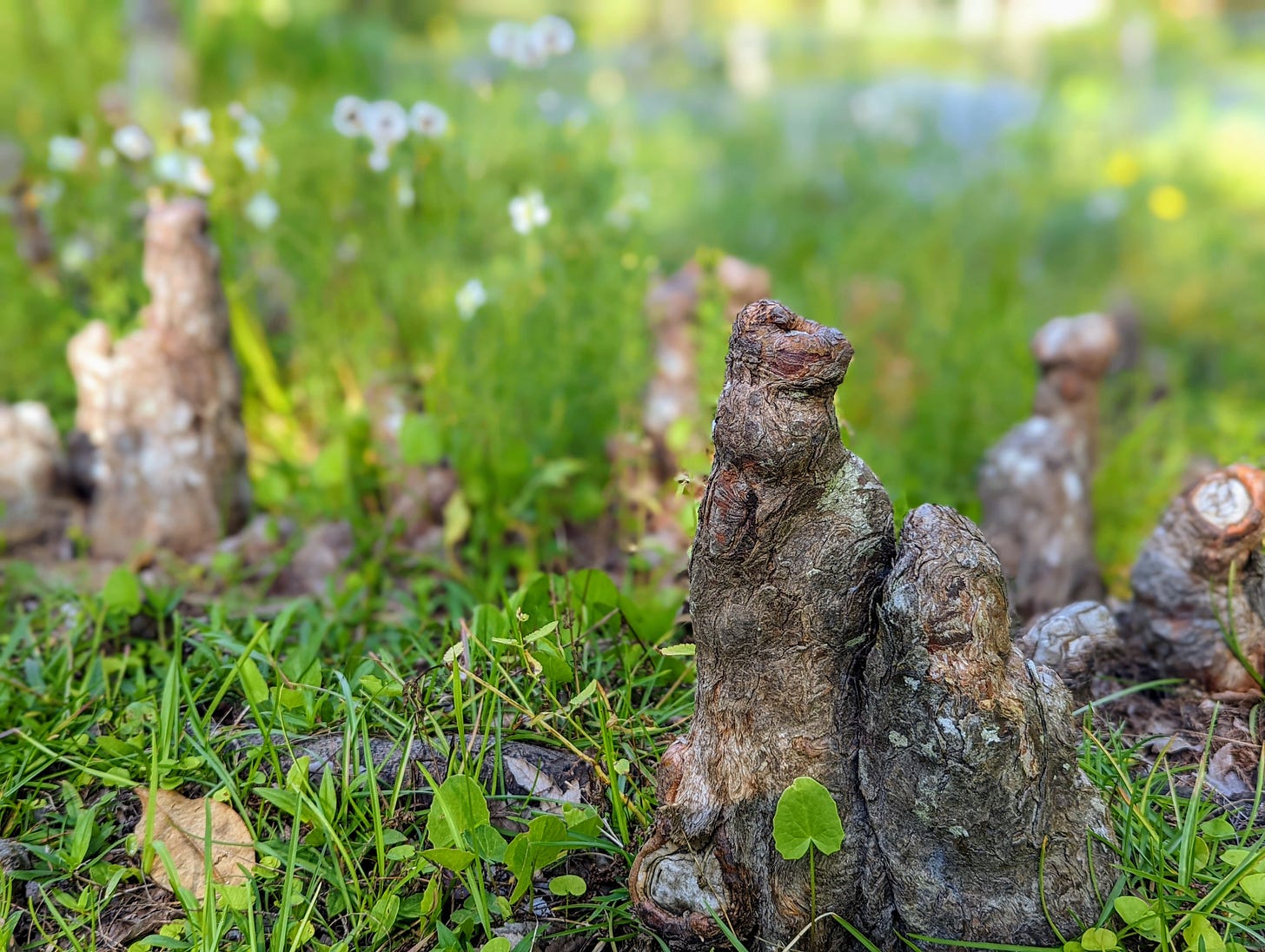A catalogue of some recent delights:
Huddling shoulder to shoulder in a tub with my daughter and my sister-in-everything-but-law as we play hide-and-seek at Woodsong, same as I used to do with my cousins at Blue Run in Virginia.
My daughter shrieking and swiping salt water from her face after catching a wave on the boogie board.
Little cousins playing Fish Fish Shark in a warm tidepool.
Wringing the ocean from my pajamas after wading in to take my partner’s phone off him at the moonlit beach.
Sand spilling from my lipstick tube when I unpack at home.
Clapping along with and singing “Wagon Wheel”—led by an amateur musician at the Local Bar and Grill—over watery cocktails, burnt burgers, and deep-fried pretzels.
A family of deer fleeing the scene once I slam the car door shut at Woodsong, limbs and leaves thrashing in their wake.
A palmful of crisp pea pods snapped off the stalk in my wilting garden box.
Drifting in a canoe that skims the surface of swamp water blackened by the tannins in cypress trees, surrounded by knobby roots and lily pads and dancing green and blue dragonflies.
It strikes me that most of these moments—all logged from a single week of vacation and visits with extended family—comprise not just beautiful, positive experiences but also some negatives.
The saltwater that stings your eyes, the swamp that hides a lurking gator, the pea vine that has collapsed under its own ample weight.
At my younger brother’s recommendation, I am reading a book called The Secret History, a dark academia novel about a group of students obsessed with the ancient Greeks.
I haven’t finished reading it just yet, but the following passage particularly resonated with me:
“Aristotle says in the Poetics,” said Henry, “that objects such as corpses, painful to view in themselves, can become delightful to contemplate in a work of art.”
Although none of these recent delights of mine come close to the dreadful reality of a pungent corpse, I appreciate the sentiment here.
There is a certain beauty in the balance.
If we create and engage with art as a means of reflecting on or understanding life, then doesn’t it follow that art should represent the ugly as well as the beautiful? The common as well as the sublime?
This imperative, I think, can apply to the craft itself in addition to the subject matter we represent.
Maybe that’s why I have always preferred imperfect art to technical perfection: raw, unpolished music that makes me feel something (other than admiration for a few well-executed notes); a less-than-photorealistic painting composed of fierce brushstrokes and striking color; a sentence that flouts prescriptive grammar rules in favor of rhythm and resonance.
Now catalogue your own delights.
Include those ugly, common details that will heighten the sense of beauty, and embrace imperfection as you do so. Worry less about formal rules and more about re-creating an experience for the audience.
And if you feel so inclined, share the results in a comment or a reply.







